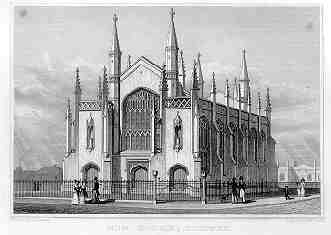1964 (Dec. 03) Police arrests 800 sit-in students at University of California at Berkeley
The Free Speech Movement was a student protest which took place at the University of California, Berkeley under the unofficial leadership of students Mario Savio, Brian Turner, Steve Weissman, Art Goldberg, Bettina Aptheker, Jackie Goldberg, and others. The students insisted, in ground breaking protests, that the university administration lift a ban on on-campus political activities and acknowledge the students' right to free speech and academic freedom.
You see, student activists had set up information tables on campus and were soliciting donations for civil rights causes. According to existing rules at the time, fundraising for political parties was limited exclusively for the Democratic and Republican school clubs. There was also a mandatory "
loyalty oath" required of faculty, which had led to dismissals of highly qualified faculty members. The loyalty oath came during the McCarthy years where finger pointing was at an all time high. Real or imagined communists or traitors to the flag were singled out and ostracized. Freedom of speech, which America has touted since the days of the American Revolution, was now being suppressed siting patriotism as its foundation. First Amendment rights, including "
freedom of speech, or of the press; or the right of the people peaceably to assemble" was crumbling under this type of suppression.
"That whenever any Form of Government becomes destructive of these ends, it is the Right of the People to alter or to abolish it, and to institute new Government…" -Declaration of Independence
On September 14, 1964, Dean
Katherine Towle announced that existing University regulations prohibiting advocacy of political causes or candidates, outside political speakers, recruitment of members, and fundraising by student organizations at the intersection of Bancroft and Telegraph Avenues would be "strictly enforced." This strip was until then thought to be city property, not campus property. She, like other leaders during her time, had bypassed the first amendment rights in favor of mandated loyalty.
On October 1, former graduate student
Jack Weinberg, who was at a table there, refused to show his identification to the campus police and was arrested. There was a spontaneous movement of students to surround the police car in which he was to be transported. Weinberg did not leave the police car, nor did the car move for 32 hours. At one point, there may have been 3,000 students around the car.
During this period, the car was used as a speaker's podium and a continuous public discussion was held which continued until the charges against Weinberg were dropped. Protesters took over in a massive sit-in. The sit-in ended on December 3, when police arrested close to 800 students. About a month later, the university brought charges against the students who organized the sit-in, resulting in an even larger student protest that all but shut down the university.
After much disturbance, the University officials slowly backed down. By January 3, 1965, the new acting chancellor, Martin Meyerson, established provisional rules for political activity on the Berkeley campus, designating the Sproul Hall steps an open discussion area during certain hours of the day and permitting tables.
History has a way of repeating itself. The "witch hunts" by Senator McCarthy during the 50s paralleled the socialistic countries which suppressed political opposition and free speech. The same communistic constraints in which McCarthy was supposedly fighting against.
Now, in the wake of the 2001 Terrorist attacks, President Bush has strongly supported phone monitoring of any American, regardless of suspicion. He also admonished those who leaked out the information about this practice. Although the act allows for overseas calls and emails, it also has a provision for any communication using a court warrant. With Bush making the call, it would be rather easy include any communication deemed suspect. The Constitution states:
"The right of the people to be secure in their persons, houses, papers, and effects, against unreasonable searches and seizures, shall not be violated, and no Warrants shall issue, but upon probable cause, supported by Oath or affirmation, and particularly describing the place to be searched, and the persons or things to be seized."
-"Those who cannot learn from history are doomed to repeat it."
 December 21 is the 355th day of the year (356th in leap years) in the Gregorian calendar. There are 10 days remaining until the end of the year. In 1898 Marie and Pierre Curie discover radium which will eventually revolutionize medical science via the x-ray machine, radiation treatments and much more. Marie pioneered radium research and helped countless people through these less invasive diagnostic treatments.
December 21 is the 355th day of the year (356th in leap years) in the Gregorian calendar. There are 10 days remaining until the end of the year. In 1898 Marie and Pierre Curie discover radium which will eventually revolutionize medical science via the x-ray machine, radiation treatments and much more. Marie pioneered radium research and helped countless people through these less invasive diagnostic treatments. 









